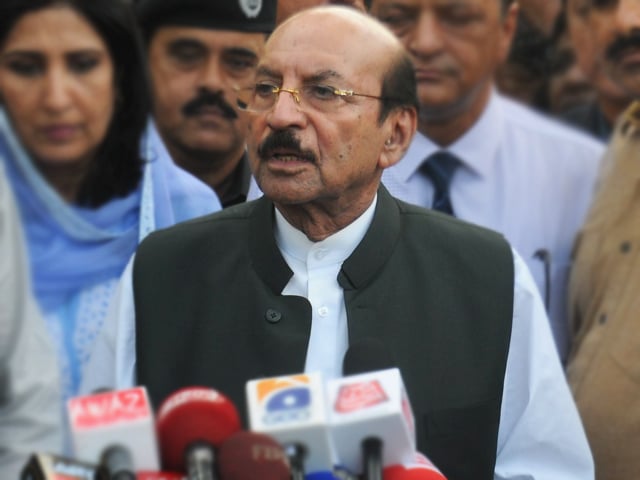
Pakistanis have no chill as Qaim Ali Shah calls it a day
Throughout, I found him to be intelligent and discerning, humble in demeanour and respectful towards everyone. He had the patience and the understanding to take presentations and ask probing questions without unnecessary interruptions. Trained in governance under the dynamic leadership of Shaheed Zulfikar Ali Bhutto, Shah sahib understood the value of professionalism. He did not allow himself to be ‘complexed’ by the knowledge that he did not possess of the technical capacity to deal with fiscal issues. Having appointed me to the NFC, he allowed me the space to prepare the technical case and devise a strategy. He would, however, come alive whenever the discussions and the bargaining turned political. His experience in the 1970s as Sindh’s finance minister and as member of the first NFC gave him the advantage of institutional memory that no one could match.
Shah sahib’s finest moment arrived during the last hour of negotiations at Lahore. The Sindh team had made all the technical and legal arguments with regard to transfer of GST services to the provinces. However, Punjab and Khyber-Pakhtunkhwa (then NWFP) — supported insidiously by some federal officers — were adamant in opposing it. It was then that Shah sahib showed his mettle. He threatened to walk out and was conciliatory at the same time and the lawyer in him insisted on particular wording of the draft declaration so that the intent was not to be subverted subsequently. The final agreement was initialed by all the parties at around 11.30pm.
Politics and governance has now been reduced to polemics and patronage distribution. However, trained in the development era of the 1970s, Shah sahib had his focus on the real purpose of governance. Of course, there were insurmountable challenges such as pressures from the party leadership for whom development appeared to be secondary and from MPAs clamouring for funds for their constituencies that left little for province-wide mega projects.
Despite the constraints, Shah sahib has two major developmental achievements as part of his legacy. One is the setting up of the Sindh Revenue Board (SRB) and its resounding achievement and the other is the Hyderabad-Mirpurkhas Highway. They are both historical and will outlast his tenure and his life for decades to come.
After the successful transfer of GST services to Sindh, the challenge was to prove that the province was able to shoulder the new task for which it had fought so hard. He made two key decisions: he placed the SRB in the chief minister’s secretariat, giving it his personal attention, and — despite pressures to the contrary — appointed a professional team to head and manage it. This was a luxury he did not always have. The SRB’s success is a testimony to his wisdom.
The other landmark achievement was the building of the international standard 62-kilometre Hyderabad-Mirpurkhas four-lane highway on a public-private partnership basis. The build-operate-own-transfer (BOOT) agreement with an international company was unique in the sense that the highway has been built with minimal financial burden on the provincial government during the construction phase as well as for a lease period of 30 years. Needless to say, there was fierce opposition from vested interests within the government; however, Shah sahib faced off all pressures and saw the project to a successful conclusion. Again, this was a luxury he rarely had. Today, the Hyderabad-Mirpurkhas Highway stands as a testimony to what Sindh can achieve, given honest political commitment.
Forever Qaim
I was also a direct witness, once, to his political sagacity. There existed a PPP-MQM core committee that dealt with contentious issues as they arose. I was not a member of the committee, but Shah sahib took me along for some of the informal meetings. One such meeting, in the Governor’s House, included the governor, the chief minister and some party leaders from both sides. The issue was the killing of two PPP workers in a clash. The atmosphere was tense as both parties had hot-heads and there were sharp exchanges. Had the situation deteriorated, more lives would have been lost and the resulting breakdown would have been exploited by anti-democratic forces. Shah sahib did not lose his cool and negotiated with the equally cool governor to define the ‘rules of the game’ for both parties. There has been no repeat of the situation thereafter.
Published in The Express Tribune, August 2nd, 2016.
Like Opinion & Editorial on Facebook, follow @ETOpEd on Twitter to receive all updates on all our daily pieces.





























1714024018-0/ModiLara-(1)1714024018-0-270x192.webp)










COMMENTS (12)
Comments are moderated and generally will be posted if they are on-topic and not abusive.
For more information, please see our Comments FAQ